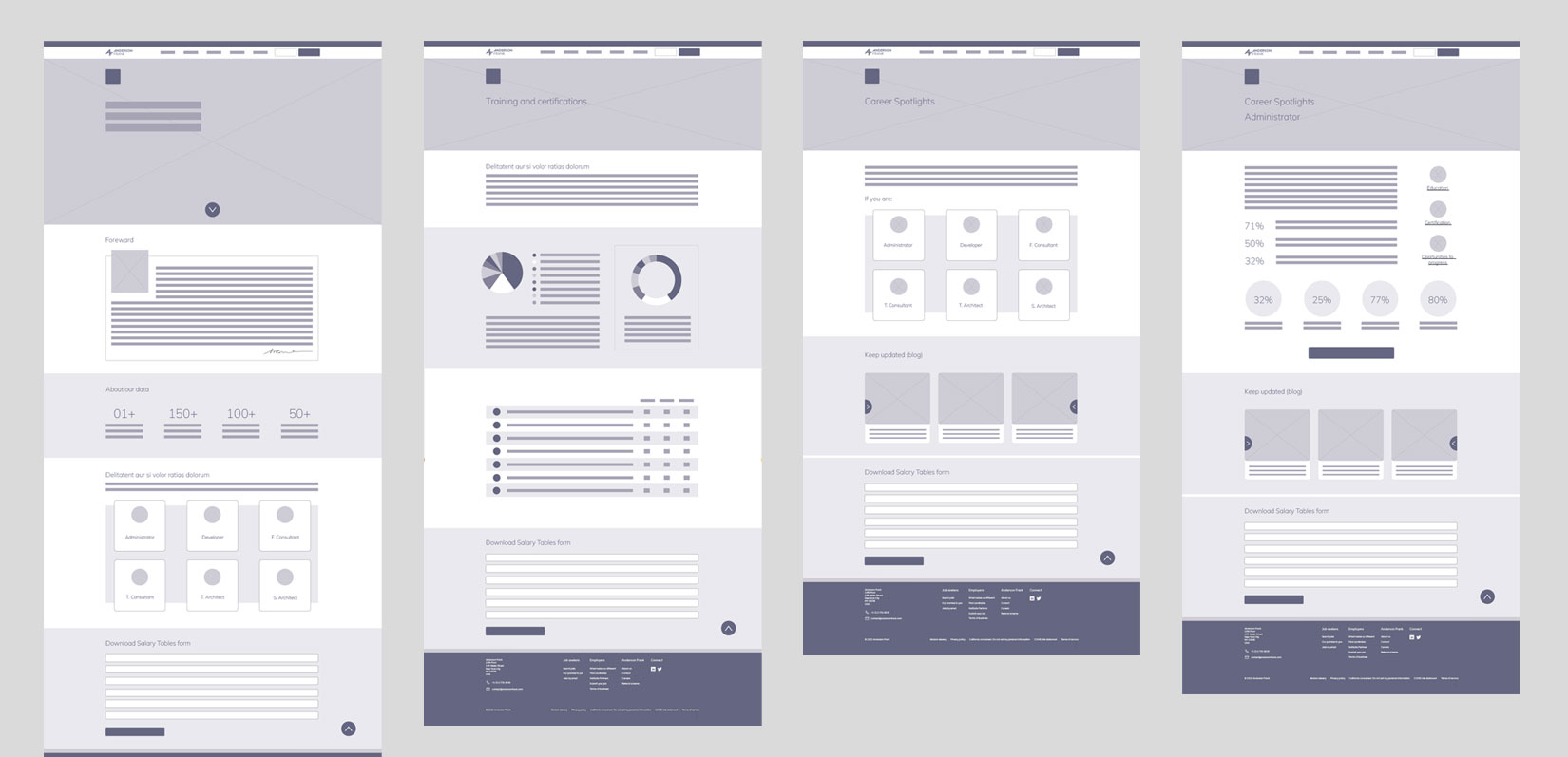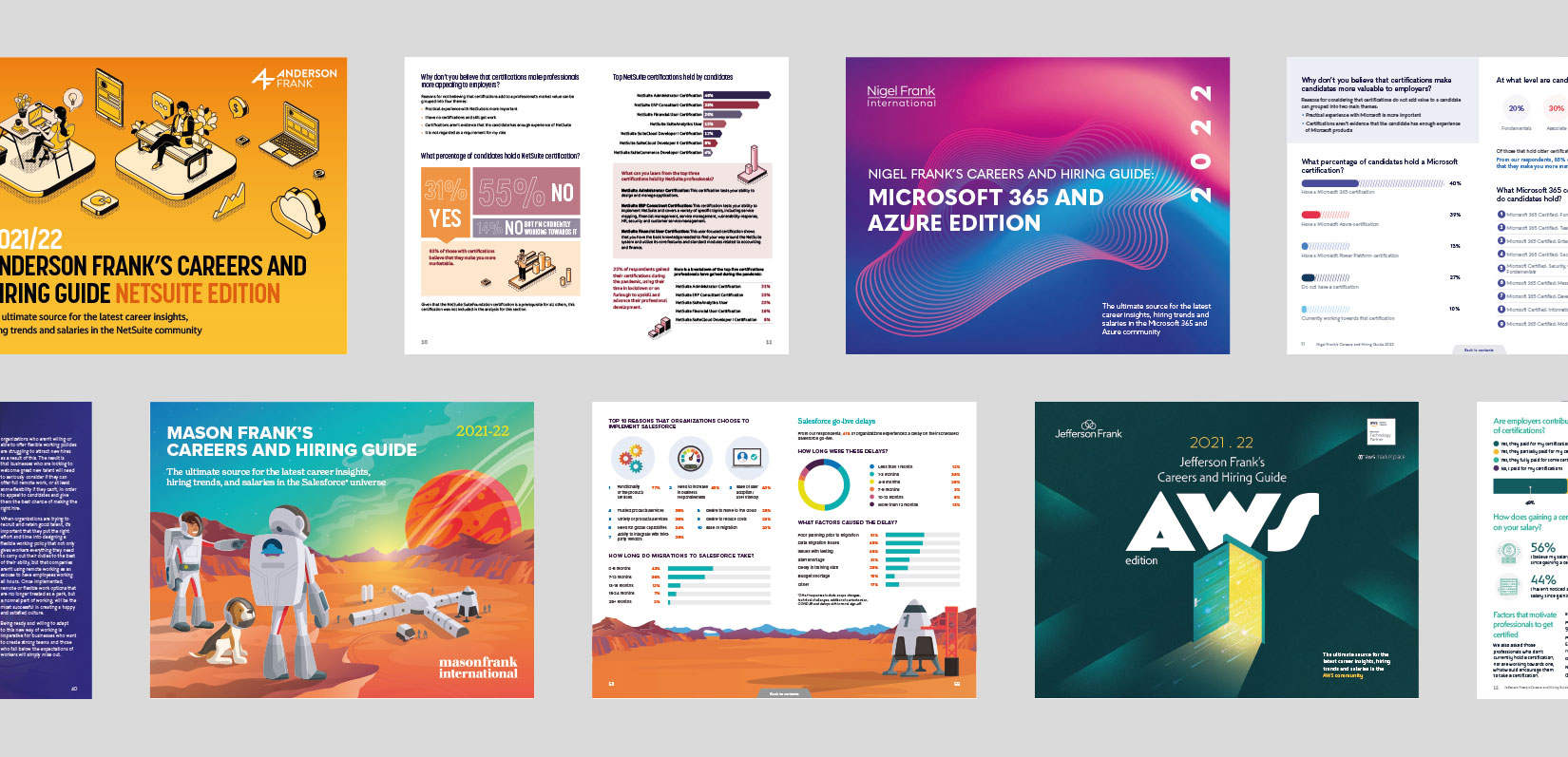Salary reports platform migration
Salary reports platform migration
Transforming a flagship resource into a scalable digital product boosting engagement and traffic

Overview
Snapshot
- Role: Design lead and project sponsor, design direction and governance
- Team: In-house design team (4 designers), Market Insights, and Content
- External partners: Contract developers; third-party web development agency
- Scope: Rebuild of TRG’s flagship Salary Reports from static PDFs into an interactive, responsive web platform, scaled across four global brands
- Tools: WordPress, Elementor, HTML/CSS, Wrike, Adobe CC, A/B testing
- Impact: 146% traffic growth in first year, 46% average reduction in design time, strengthened vendor partnerships, A/B testing validated a bespoke visual identity approach as higher-performing across social campaigns
Context & Objectives
Context
Tenth Revolution Group’s flagship Salary Reports were published as lengthy PDFs, shared via download forms on brand sites and stored on the company intranet. While once effective, the format had become increasingly impractical, demanding significant design and marketing resource, with sales teams often sharing outdated copies, creating version-control issues.
The reports themselves had grown unwieldy. Some stretched to nearly 180 pages, with oversized file sizes that were difficult to share. Static layouts limited how data could be visualised, and the PDFs were not mobile-friendly, restricting usability. Translation and localisation were costly, meaning only a few versions were produced beyond English.
As a major annual project involving significant investment, the diminishing usability of the reports risked eroding their value. Without modernisation, TRG faced declining ROI, reduced credibility, and missed opportunities to position itself as an innovator in the tech ecosystems.
Objectives
- Modernise delivery by replacing PDFs with responsive, digital-first microsites.
- Elevate user experience through accessible, interactive design optimised for both desktop and mobile.
- Streamline production with a modular system that would reduce design effort year-on-year.
- Scale globally with adaptable frameworks that could support multiple brands, ecosystems, and languages.
- Maximise impact by unlocking SEO benefits, enabling deeper engagement, and positioning TRG more firmly as a thought leader.
Approach, Key Decisions & Execution
Approach
I secured buy-in by mapping timelines, deliverables, and feasibility, then led the design strategy and execution. The new microsites required a complete rethink of hierarchy and navigation, optimised for digital consumption. Working with Market Insights, we translated complex data into modular sections and scroll-triggered infographics, supported by interactive features like accordions and anchor navigation.
Balancing consistency and flexibility was key: the UX framework was shared across all four initial brands, while styling was adapted through colour palettes, type treatments, and bespoke graphic assets. Accessibility was built in from the outset, ensuring global usability across devices.

Key Design Decisions
- Retire static PDFs in favour of responsive, web-based microsites
- Create a modular design system scalable across multiple brands and languages
- Prioritise accessibility and mobile responsiveness for global audiences
- Allow reports their own distinctive look and feel, validated by A/B testing, while remaining connected to the parent brand
- Shift from gated PDFs to open web content to boost SEO, discoverability, and thought-leadership positioning
Execution & Governance
Working alongside internal and external partners, I coordinated design, development, and content delivery. Contracted developers created custom chart widgets and managed WordPress environments; I directed their output and controlled budgets. Governance was maintained through global style sheets, modular components, and supporting materials for sales teams, who were trained in how to leverage the reports during client conversations.
Campaign creative was also aligned to the new platform. We tested brand-standard assets against bespoke visuals adapted from the microsites’ design language. The latter consistently outperformed, validating the creative approach and reinforcing the importance of flexibility within governance.
Impact & Reflection
Impact
- Traffic:146% increase in the first year, thanks to improved SEO and accessibility.
- Efficiency: 46% reduction in design time per project on average, freeing resources for content and strategy.
- Vendor Partnerships: Strengthened relationships, including Microsoft’s direct promotion of Nigel Frank’s report.
- Engagement: A/B testing confirmed that the microsite-inspired campaign visuals drove higher engagement than standard brand assets.
Reflection
Credits
- Design Direction & Leadership: Neil Robinson
- Design Team: Team Leader, Senior Designers, Graphic Designer
- Marketing: Head of Market Insights, Head of Digital Marketing, Content Team, IT Director (Applications)
- External Development:Contracted WordPress developers (custom chart widgets, staging environments)
- Web Integration: Third-party CMS partner agency
Gallery
Interactive PDFs: 2022-23

Responsive microsites
All assets copyright of Tenth Revolution Group and featured with permission.
